Sushi, loved around the world, is one of Japan's proud culinary delights.
This dish is not only beautiful to look at, but also has a rich history and many variations.
Here, we will introduce a wide range of topics, from the basics to etiquette, so that you can gain a deeper understanding of the appeal of sushi.
About sushi
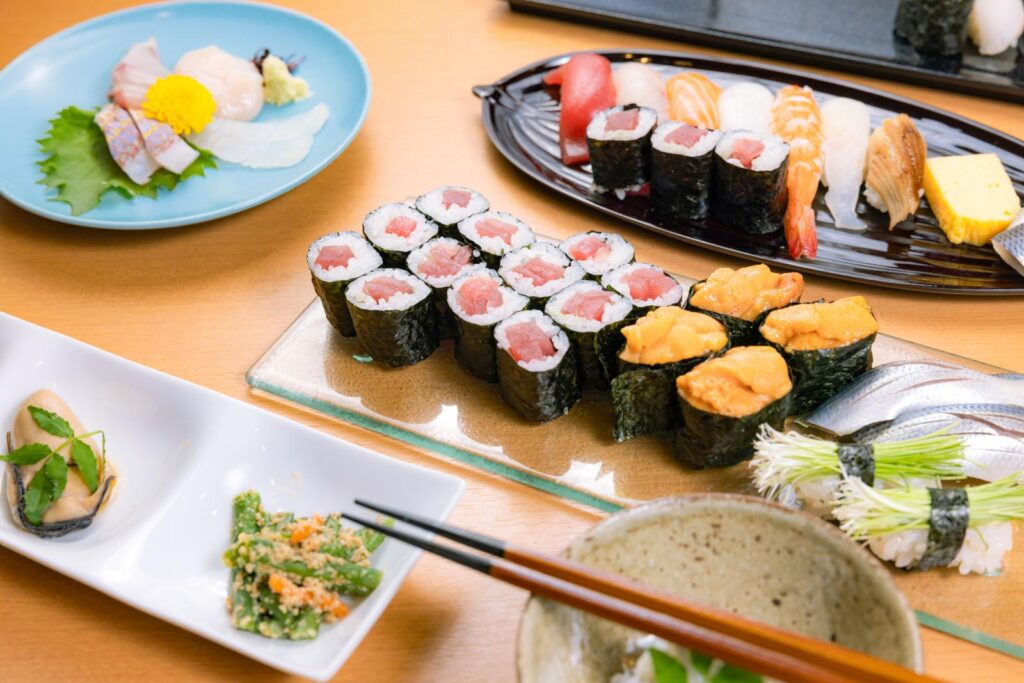
Sushi is a dish that represents Japanese food culture. It is made by combining fresh seafood and vegetables with vinegared rice, resulting in a dish that is both beautiful to look at and delicious to eat.
You may have the impression that sushi equals raw fish, but in fact, there is a wide variety of ingredients used in sushi. In addition to sashimi such as tuna and salmon, omelet, cucumber, and fried shrimp are also popular sushi ingredients.
Sushi is easy to eat, yet elegant and slightly special, and is enjoyed in a wide range of situations, from everyday meals to celebrations. It is truly the epitome of Japanese cuisine.
TasteTune「Sushi」
By the way, everyone, have you heard tastetune's song “Sushi”?
The core of tastetune lies in sharing music to help people enjoy food more and to spread awareness about it.
Here, we introduce the thoughts, expressions, and ingenuity embodied in this music.
The emotion poured into the sound
At the heart of “Sushi” lies the exquisite fusion of traditional Japanese instruments and a contemporary soundscape. Utilizing the elegant resonance of the koto and the deep tones of the shakuhachi, it achieves a perfect balance reminiscent of rice and toppings.
Craftsmanship expressed through rhythm
The rhythm of this piece echoes the movements of a sushi chef's hands. Each note is crafted with meticulous precision and grace, designed to feel like a single piece of sushi. Listen closely, and you might even sense the chef's concentration and the rhythm of their breath.
Sound design that awakens the senses
The composition incorporates sounds like the light tapping of a bamboo blind and the subtle chop of a knife slicing sashimi, painting the process of making sushi through sound. Throughout, it prioritizes “freshness,” “simplicity,” and “purity.” Deep, oceanic resonances convey the freshness of the fish, while sharp, accented sounds represent the kick of wasabi.
Music to savor bite by bite
The song “Sushi” is music where each note can be savored like a piece of sushi. The flow of phrases spreads like waves of umami, aiming to create an experience where you can enjoy sushi with both your ears & your heart.
A calm and elegant time
Throughout, this piece creates a time that is “gentle, elegant, and deeply immersive.” It expresses the quiet, satisfying feeling of eating sushi and the quintessential Japanese beauty through sound. Close your eyes and listen, and I believe you will enjoy the experience of savoring sushi through sound.
The Taste of Sushi
When it comes to sushi, it's definitely the variety of toppings!
Even I, living in Japan, can scarcely grasp the sheer number.
This time, we'll introduce some of the major tuna varieties.
Tuna
When it comes to sushi, this is it!
I think it's a dish that's especially popular with children.
Even within tuna, the taste varies depending on the cut, such as fatty tuna, medium fatty tuna, and lean tuna.
First up, fatty tuna!
Ootoro is the fattest part of the tuna, located on the belly side, and has a pale pink color.
The surface is glossy and radiant, with veins of gold mixed in.
The texture melts in your mouth the moment you take a bite, filling your mouth with a rich, savory flavor.
Next up, medium fatty tuna!
Simply put, it can be described as falling between fatty tuna & lean tuna.
It has a color that blends the pale pink of fatty tuna with the red of lean tuna.
Medium fatty tuna, with its well-marbled fat yet still retaining lean parts, can be enjoyed even by those who dislike overly fatty foods.
If you're eating just one piece, go for the fatty tuna; if you're eating a lot, go for the medium-fatty tuna.
Last but not least, lean meat!
It is lean and firm, with a vivid red color.
You can taste the tuna's natural umami, including minerals and iron, and its firm texture allows you to savor that flavor with every bite.
This is the quintessential sushi! It's the king of sushi, enjoyed by people of all ages.
The History of Sushi
It originated as a “preserved food.”
The origin of sushi lies in the method of preserving fish in Southeast Asia.
The style known as “narezushi” involved pickling fish in salt and rice and fermenting it for preservation, which was quite different from the sushi we know today.
This type of sushi spread to Japan via China, where it eventually evolved into a unique form.
The birth of nigiri-zushi in the Edo period.
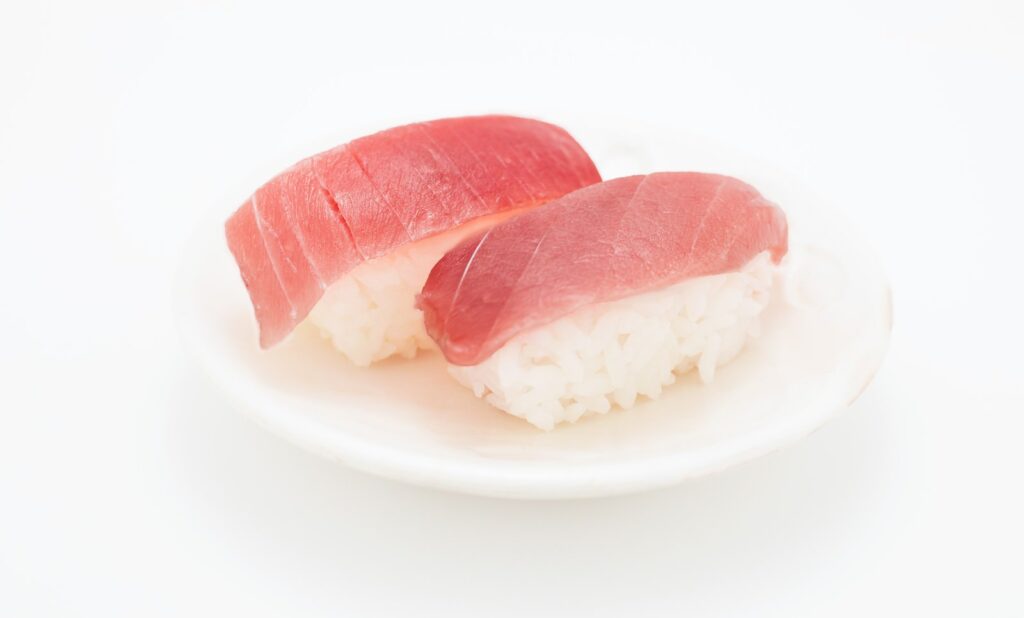
In the Edo period, “hayazushi,” which does not require fermentation, appeared, and “nigiri sushi,” which is made by mixing vinegared rice with fresh fish and shaping it into balls on the spot, was created.
This nigiri sushi became wildly popular in the streets of Edo as a form of “fast food” sold from food stalls. It was easy to eat and delicious, making it a beloved dish among the common people.
Nowadays, it's a dish loved around the world.
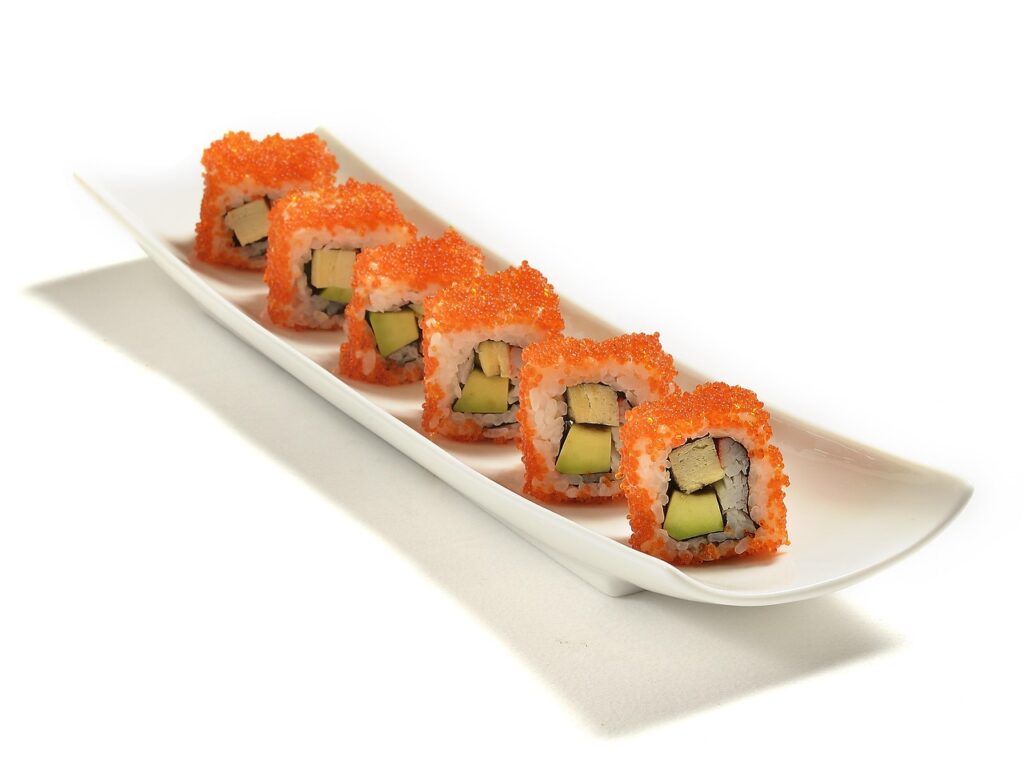
Modern sushi has evolved with the times and spread not only throughout Japan but also around the world.
Unique sushi styles that originated overseas, such as the California roll, which became particularly popular in the United States, are also attracting attention.
Today, “SUSHI” has become a universal language, and while continuing to carry on Japanese traditions, it has grown into a cuisine that continues to fascinate people across national borders.
How to eat sushi and manners
Sushi can be enjoyed at both high-end and casual restaurants, but knowing a few simple manners will help you enjoy it even more.
Here, we will introduce basic eating methods and manners that even beginners can enjoy with peace of mind.
1. you can eat it with your hands!
The traditional way to eat sushi is with your hands. Nigiri sushi, in particular, can be eaten with your hands without any problem.
Of course, you can use chopsticks if you prefer. Relax and enjoy your meal in whatever way is most comfortable for you.
2. Put a little soy sauce on the fish.
When adding soy sauce to nigiri sushi, the basic rule is to place the fish side down and lightly dip it in the soy sauce.
If you put soy sauce on the shari (rice) side, it may lose its shape or become too salty.
In addition, for sushi that is difficult to apply soy sauce to, such as gunkan-maki, there is a method of using ginger to apply a small amount of soy sauce.
3. Gari is used as a “palate cleanser.”
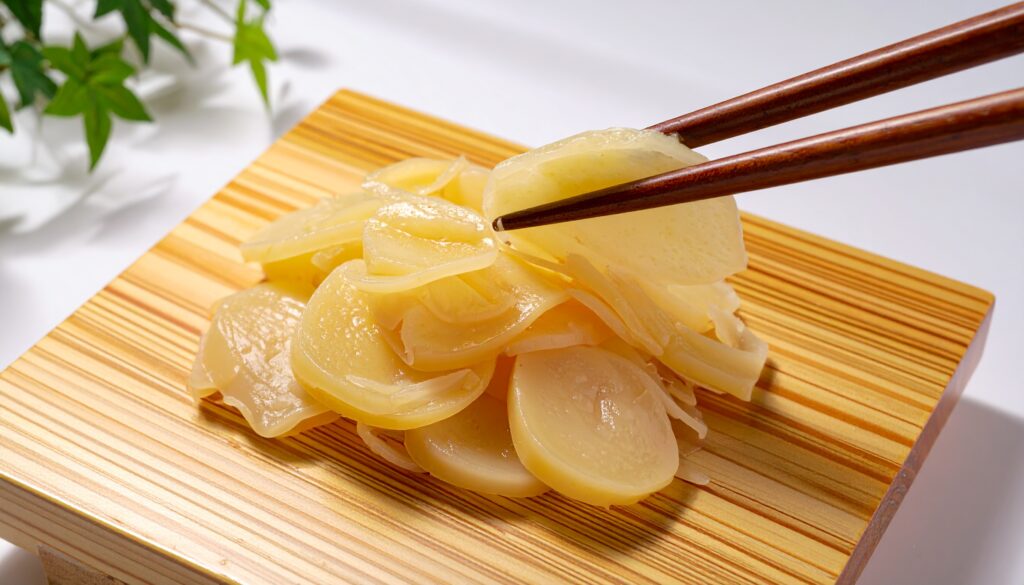
Gari is not eaten with sushi, but is traditionally eaten between different types of sushi as a “palate cleanser.”
It refreshes your mouth, allowing you to fully enjoy the taste of the next dish.
4. Reset your mouth with agari.
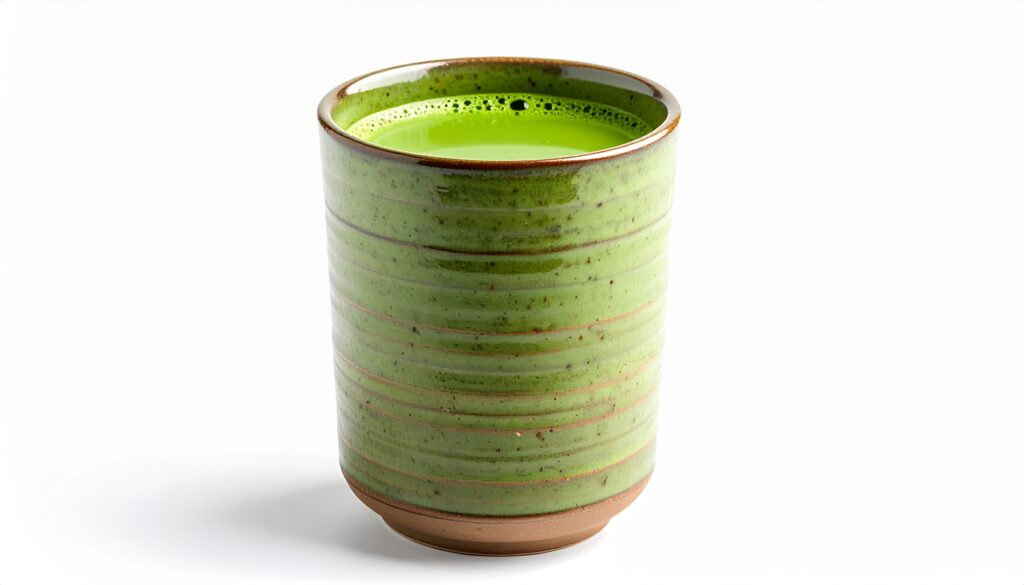
The hot tea served at sushi restaurants is called “agari” and is meant to cleanse the palate after eating fatty ingredients.
Compared to gari, which is served as a palate cleanser, agari can be drunk freely during or after a meal.
Refresh your mood and enjoy sushi at your leisure.
5. The order of eating is “from light to rich.”
To enjoy delicious sushi, pay a little attention to the order of flavors.
As you progress from light ingredients such as white fish and shellfish to rich ingredients such as fatty tuna, sea urchin, and salmon roe, you can clearly taste the difference in flavor.
This is not so much a strict rule of etiquette as it is one way to enjoy the game like a connoisseur.
6. Common etiquette mistakes.
When enjoying yourself, it is recommended to avoid the following behaviors.
- Put too much soy sauce on it.
- Eat with gari (pickled ginger) on top.
- Leave only the rice.
- Continuously taking photos with your smartphone at a high-end restaurant.
It is good manners for adults to enjoy themselves quietly, without forgetting to be considerate of the craftsmen and other customers.
However, at casual restaurants such as conveyor belt sushi restaurants, there is no need to be so formal.
With a little consideration and respect, anyone can enjoy sushi.
How to make sushi
For those who want to try making sushi at home, here is a simple recipe.
Even if you don't have professional skills, there are many ways to enjoy delicious food.
◆ How to make basic vinegared rice
The foundation of sushi making is “vinegared rice.”
Ingredients (serves 2-3)
- Rice (freshly cooked): 2 cups
- Vinegar: 3 tablespoons
- Sugar: 2 tablespoons
- Salt: 1 teaspoon
procedure
- Mix vinegar, sugar, and salt well to make “sushi vinegar.”
- Transfer the cooked rice to a large bowl and sprinkle sushi vinegar over it.
- Mix while cutting, then cool with a fan to bring out the shine, and it's done!
◆ Examples of typical sushi recipes
Nigiri sushi
- Form the base by shaping the vinegared rice into bite-sized balls (the key is to make them fluffy).
- Add your favorite ingredients (such as tuna or salmon sashimi).
- Adding a small amount of wasabi is also recommended.
Maki-zushi (nori-maki)
- Spread seaweed on top of the rolling mat and spread the vinegared rice evenly over it.
- Place the ingredients (cucumber, egg, crab sticks, etc.) in the center.
- Roll it up using a rolling mat, leave it for a while to let it settle, then cut it.
Hand-rolled sushi (popular at parties)
- Cut the seaweed into quarters.
- Put vinegar rice and your favorite ingredients on top, then roll it up.
- Enjoy freely with your favorite combinations.
◆ Key points
- Freshness is key! Be sure to check for the “sashimi” label at supermarkets and other stores.
- The key to making shari (vinegared rice) is not to press it too hard. This will give it a light and fluffy texture.
- To prevent the vinegar flavor from evaporating, do not store too much in the refrigerator.
Summary
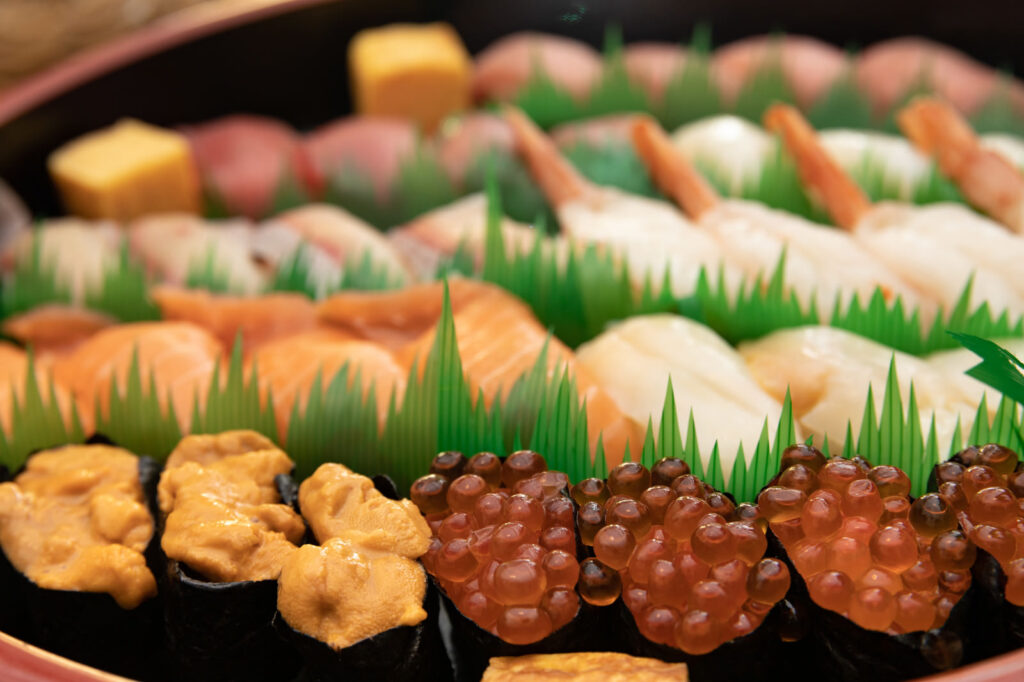
Sushi is a Japanese dish with a long history and deep cultural roots, yet it is also something that anyone can enjoy casually.
Just knowing basic knowledge and manners will make you even more attractive.
Whether it's an ordinary day or a special occasion, we invite you to experience the depth of Japanese food culture through sushi.

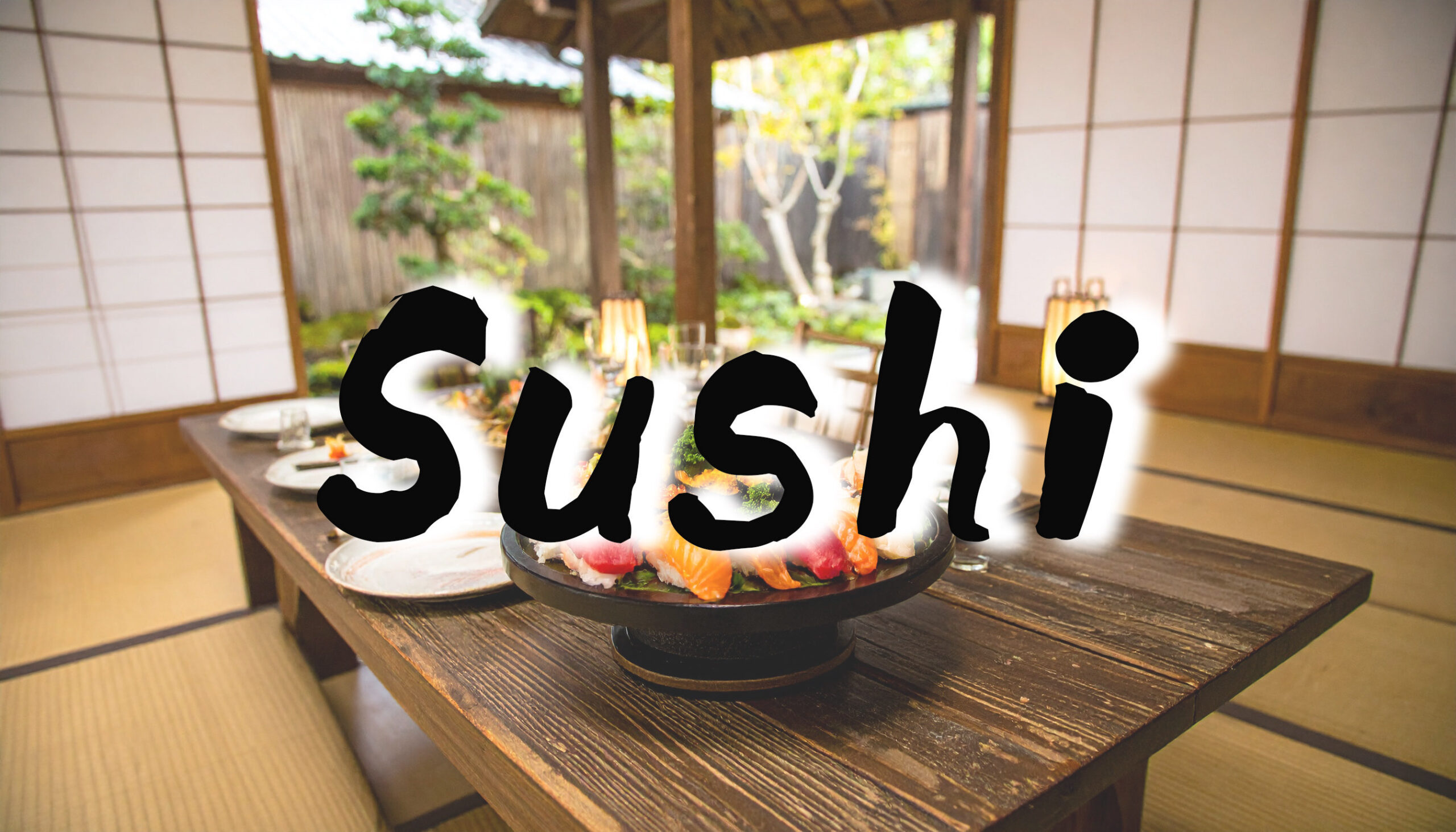

Comment
I thought it was really interesting that it wasn't just introducing sushi as a Japanese dish, but also expressing sushi as a song.
While the focus was mainly on tuna, I wish they had also featured shrimp, since I only ever eat shrimp and ramen at sushi restaurants.